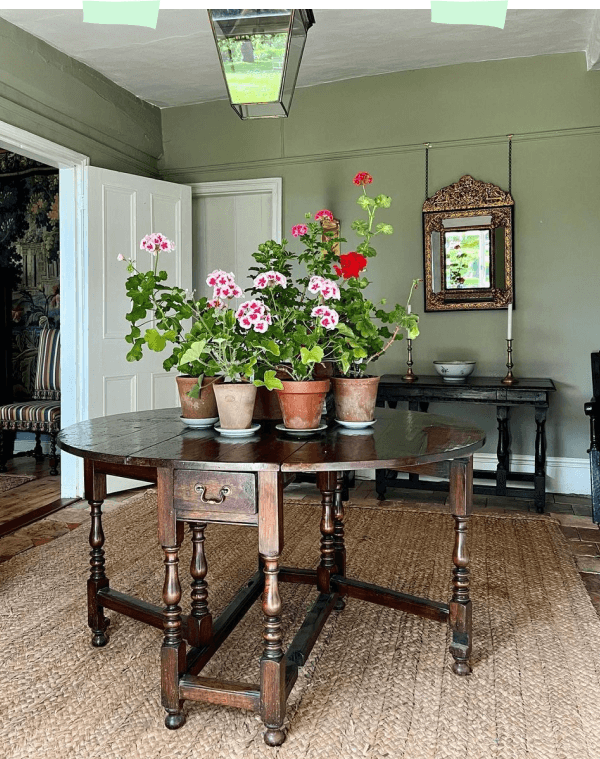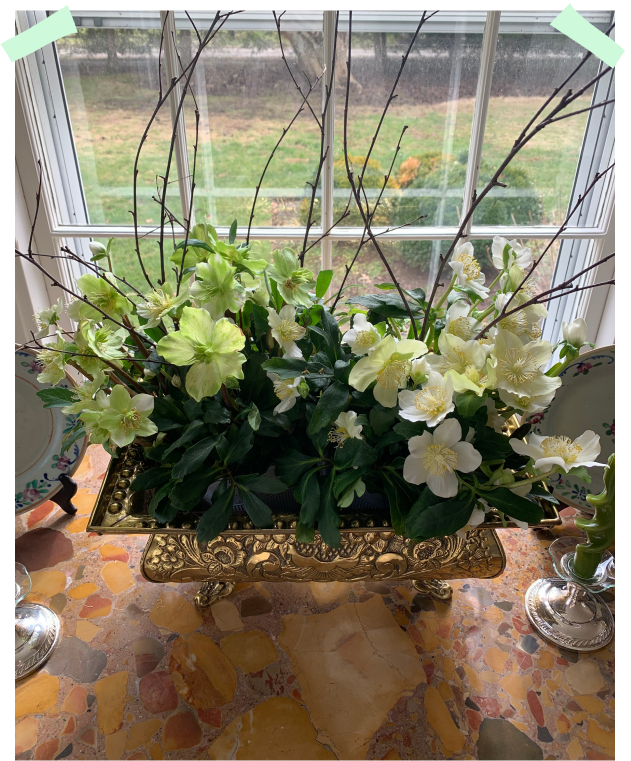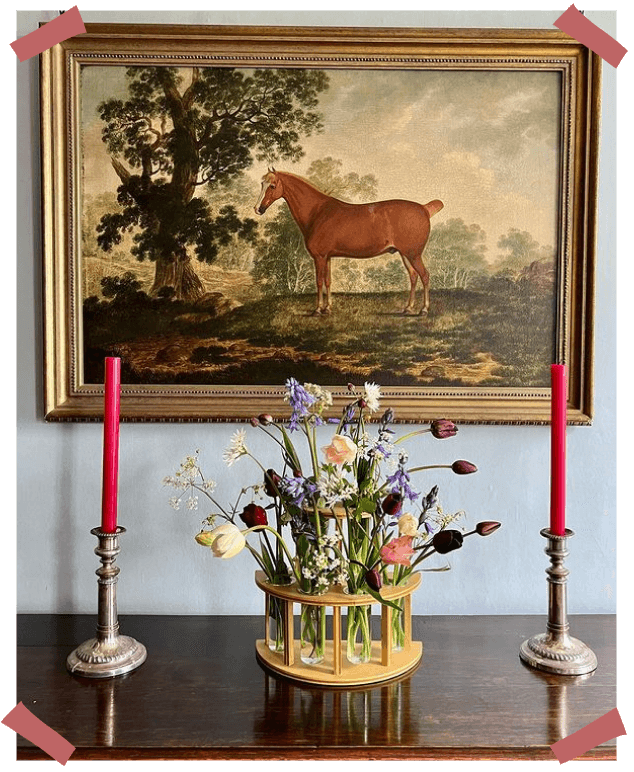Ideas & Inspiration for Decorating with Flowers & Plants
SOS GUIDES
Floral decor is one of the easiest, and most impactful, ways to decorate your home. This guide is here to help you pick out the right flower containers, vases, and flower pots to arrange flowers and elevate plants for day-to-day enjoyment or entertaining.
Overview of Floral Decor
Consider plants like another piece of decor in your arsenal to create a layered and interesting home. However, I understand not everyone is comfortable with flowers or plants, and so the aim of this guide is to make it easy to pick out flower containers as well as plants or flowers to go in them.
A personal perspective on floral decor
I was raised in a home where there were flower pots and vases full of blooms everywhere. My mom is a gardener and can never resist buying herself plants and flowers to grow or in dormant seasons to keep in the house. Still to this day, every time I go home there is something new on display, each time in a different flower container, I swear -- the depth of her collection is truly impressive.
Growing up in this environment has taught me that flowers and plants are a relatively low cost way to make a home feel so alive and inviting.
As an adult, I’ve adopted the same practice. Even though I live in the city and don’t have access to a garden all the time, I’m always buying flowers and just recently started getting more into plants – now they’re on almost every surface! (And my mom always sends me home with lots of clippings from her garden when I go home.)
The way my mother treated flowers and plants as an extension of home decor showed me the importance of collecting flower containers. Putting plastic pots in decorative containers significantly upgrades them, and while you can literally put flowers in anything that will hold water, they’re far more beautiful in proper vases. My mom’s motto is, you can never have enough flower containers! On that advice I am always on the hunt for unique vases and pots, and I believe it will be a lifelong pursuit. The upside is that I can rotate through them to keep things fresh, and I have more flexibility to find the right floral container to suit whatever I bring home.
A flower vase and bud vase are cheerful floral decor
Image: shared by @clarenceandgraves
A curated guide to creating a one-of-a-kind home: interior inspiration, styling tips, & unique objects
FOLLOW ALONG
Where to source flowers and plants
Trader Joe’s is my best kept secret. I never fail to find something ‘cheap and cheerful’ as my mom would say even in the dead of winter. Although the flowers and plants are a bit more generic, you can still be surprised by what you find with a lot of variety including flower bunches, potted plants. and herbs.
Your local grocery store (or bodega in NYC) usually has bunches of flowers that will do the trick in a pinch.
Home improvement stores like Lowe’s and Home Depot typically have a gardening section. The selection tends to include more plants for home gardening, but you can find some indoor or houseplants there too.
When I really want to treat myself, I go to my local florist where I can buy more special flowers individually. Even just a few stems can provide a huge pick-me-up.
In season, buying local is the way to go. Visit the farmer’s market to get seasonal flowers and even some potted plants.
There are many plant focused stores out there nowadays where you can buy online and sometimes in-store. I was a skeptic of buying plants online, but I recently completed a successful purchase of a fern from Ethereal. A nice feature that reassured me is that they show photos of the actual plants they’ve recently shipped to give you a better idea of what yours will look like.
Images: grocery store flower pot (top), individual flower stems at my local florist GRDN (bottom)
A flower container for all types of flowers and plants
Once you have your flowers or plants, then it just comes down choosing the right flower container to display them. Sometimes, knowing what flower containers you have at home can influence what you buy – for instance, if you have a tulipiere (a vase with multiple holes that unsurprisingly was made by the Dutch to hold tulips), you may want to pick up tulips at the start of spring. Or if you’re planning a dinner, you could choose a flower container as a centerpiece for your table, then select the flowers that will go best in it.
Overall, here are the criteria to keep in mind when selecting flower containers:
Flower vases and pots that are well-crafted and have a special quality to them will make your floral decor more interesting. The beauty and the uniqueness of the flower container will only enhance the flowers or plants.
Collect a range of styles, even some that might be a little funky. Since flowers and plants don’t last forever, whatever flower container you use isn’t a big commitment. You can afford to take a risk. Plus, it’s always better to have options, options, options!
You’ll want a variety of flower containers that you can deploy for different uses. You don’t want to get home with a bundle of branches to find that you don’t have a flower vase that’s sturdy enough to hold them. (I know from experience!)
Images: A selection of terracotta and clay flower pots (top); a large glazed ceramic vessel (bottom)
Pots & Planters for Plants
There are two ways you can decorate with houseplants. One option is to leave the plant in the plastic pot and simply plunk it inside a decorative container like a cachepot or planter without a hole on the bottom and take it out to water it (optional: cover it with sheet moss or Spanish moss). The other option is repotting the plant in a flower pot with a drainage hole for watering. The only exception is if you are repotting a bulb – in this case the flower is nourished from the bulb, and therefore you don’t need to water it. That means you can re-pot in a planter or any container without a hole.
Image: Carlos Garcia
Types of pots:
Planters or cachepots, commonly in porcelain, metals like brass, wicker, paper, sisal and many other materials; what distinguishes them is that they don’t have a hole in the bottom.
Other flower containers that can be used as planters, like baskets or even wine coolers
Plant pots, which includes terracotta, clay, and cement pots with a hole for drainage. Sometimes they come with a matching saucer to catch water and dirt or you can use a small plate.
Optional: jardiniere or flower stand to display a single or multiple pots or planters
Image: Sense of Spencer
What plants to use:
If you’re planning to use a planter, make sure the dimensions of the plant fit inside. For pots, you should select a plant that’s a size or two down from the pot to give it room to grow.
Bulbs like daffodils, fritillaria, paper whites, amarylis
Flowering house plants like fuchsia, begonias, tulips
Foliage house plants like ferns, ivy, palms
Succulents or cactus
Herbs
Where to put this floral decor:
Dinner table; side tables, desk, entry table; kitchen counter; windowsills
Image: Sense of Spencer
Vases for Flower Arrangements
These vessels with wider openings are the most essential flower container, whether you’re a pro making a sophisticated arrangements or a flower appreciator looking to put a bunch in water. Flower vases come in a range of styles and materials, and many other household containers or decor can be used as a flower vase, like a pitcher. Keep in mind the wider the opening, the more flowers you will need to fill it (unless you use a flower frog to hold flowers in place and create a sparser arrangement), but if the opening is narrow, fewer flowers, in particular wider stems, can fit.
Image: Luke Edward Hall
Types of flower vases:
Vase, made of all sorts of materials including glass, ceramic, porcelain, metal, and coming in a range of shapes and styles
Pitchers used for serving drinks
Candle containers - remove the candle wax and save the glass or ceramic
Image: Sense of Spencer
What flowers to use:
A bunch of cut flowers in a single variety for a visual impact that’s simple and easy to achieve
A mix of flowers usually consisting of a foundation (greenery to serve as a base and provide structure, focal flowers (a few special blooms in an odd number to feel more natural), secondary flowers (a complimentary flower in a different shape to fill in the space and create depth), filler flower (small budded flowers to fill in any other gaps).
Where to put this floral decor:
Anywhere! Where you can see it / enjoy it - on a coffee table / side table, kitchen counter, or a dinner table as long as it doesn’t block people’s view of each other.
Image: Sense of Spencer
Bud Vases for Single Stems
Bud vases are one of the most useful floral containers you can have. Keep handy for when you only have a few flowers or when you want to sprinkle smaller floral arrangements around your home (my bedside table is my favorite). A bud vase has a smaller opening, so it can only fit a small amount of flowers, and can be short or tall to accommodate shorter or tall stems respectively.
Image: @aconsideredspace of @cotedefolk space
Types of bud vases:
Ceramic or glass bud vases
Small bottles - for instance, vintage apothecary bottles in clear, pale blue, and green, found at flea markets, antique stores or re-sale sites; or drink bottles that have a pretty color or shape
Small cups or tea light candle holders - flowers can either be bunched to fit the opening or put a flower frog inside to hold a flower or two
What flowers to use:
Herbs - if you buy herbs from the store and have any leftover, put them in a bud vase on your counter for easy access and to enjoy
Clippings from the garden - when you can’t cut too deep on a stem because there are buds lower down or when a flower snaps, put the shorty stems in a bud vase
Leftover flowers from a bigger arrangement - when an arrangement is on its last legs, remove the better looking flowers, recut, and arrange in a bud vase with fresh water
Individual stems - cut or buy even just a single perfect flower to showcase in a bud vase
Where to put this floral decor:
Bedside table / dressing table; side table; powder rooms; grouped together on a coffee table; placed on an individual table setting or grouped together as a table centerpiece
Image: Francesca Gentilli
Unique Vases for Dramatic Arrangements
These unique vases are for when you want to add some drama or just have some fun. Tulipieres, vial vases, and ikebana vases might look intimidating, but if you’ve got a lot of flowers and some patience, it’s pretty easy to arrange them – the multiple openings literally act as a guide, like a paint by numbers. Using wider shapes, like coupes, urns, and baskets, can be a little trickier, but it’s worth it as they can be so impressive. Basically, you insert a flower frog at the bottom of the container, fill with water, and poke the flowers in to achieve the look you want. Here’s an example of me arranging daffodils in a crystal basket.
Image: Lauren Santo Domingo
Types of unique vases:
Tulipiere - one vase with multiple openings to hold flowers
Vial vase - individual vials brought together into one piece, each holding individual stems
Ikebana vase - a bowl-like container with holes that guide you where to insert the flowers to create a Japanese ikebana-inspired arrangement
Coupe, urn, baskets - vessels with wide opening to arrange flowers with a flower frog
Image: Carlos Garcia
What flowers to include:
For tulipieres, tulips work best, but poppies, daffodils, and other delicate flowers with a bendy stem will work too
For vial vases and ikebana, try garden clippings like bleeding heart, lacy flowers (orlaya, queen anne’s lace), daisies, blue bells, flox and other delicate flowers like anemone, sweet pea, poppies
For coupes, you can use similar flowers as what you’d use for a flower arrangement in a vase (either all the same flower, like a daffodil, or a mix)
Where to put this floral decor:
A console table in any room! A couple with a low profile could also be used for a table centerpiece.
Image: Sense of Spencer
Large Vessels for Branches
Especially in spring and fall when colorful branches abound, it is so tempting to clip branches outside or purchase at the market. Be prepared with a large container that’s tall enough to hold the branches and has some weight to it so it doesn’t tip over. Placing one or two flowering branches or greens in a vessel creates artful simple floral decor. Alternatively, for an impressive arrangement, arrange branches in the vessel and add in flower stems.
Image: Eyeswoon
Types of large containers:
Ceramic containers, like confit pots
Porcelain, like blue & white chinoiserie
Heavy glass vases
What branches to use:
Flowering blossoms like cherry, apple, pear, quince, forsythia
Foliage or greenery
Pussy willow branches
Where to put this floral decor:
Entry hallway table, large kitchen islands, large console table
Image: Leah Lane
STYLING
Floral Centerpieces for Warmer Days
Find out how floral pros create centerpieces inspired by nature, and create them at home without too much fuss.







































